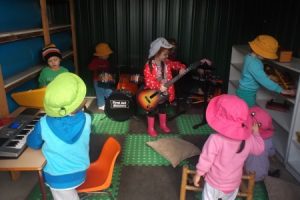
The New Year will bring them the benefits of the Federal Government’s child care overhaul to more than 6,100 families in the electorate of Hume.
The new child care package – which comes into effect from July 2 next year – would provide the greatest hours of support to families which work the longest hours, and the greatest subsidy and financial support to families earning the least.
“We’ve taken action to overhaul a broken system – and families using child care in Hume should be reassured that relief is around the corner,” says Member for Hume Angus Taylor.
Mr Taylor said child care fees grew at about twice the rate of the economy last year, according to new data from the Department of Education and Training.
He said while the Turnbull Government had taken action to slow child care fee growth, families were still feeling the pinch following 10 years of fee growth – including spikes as high as 14 per cent per year under Labor.
“We understand the pressures families are feeling – that’s why we’re investing an extra $2.5 billion into the system, with almost one million Australian families to benefit.
[social_quote duplicate=”no” align=”default”]“Comprehensive changes such as our new hourly rate cap to put downward pressure on fee increases, and ending the $7,613 annual rebate cap, will empower parents to make decisions about when or how much to work that best suit their family circumstances.[/social_quote]
“It will mean an end to the days when parents face the stress of reaching a funding cliff mid-year when they hit the rebate cap.
“It’s important families have the opportunity to plan for the changes so I encourage them to visit our child care estimator, plug in their details and see exactly how they’re set to benefit.”
 Mr Taylor, pictured left, said the Turnbull Government’s child care package includes:
Mr Taylor, pictured left, said the Turnbull Government’s child care package includes:
· increasing Australia’s investment in early childhood education and care by $2.5 billion so that almost one million Australian families benefit;
· introducing a better activity test to ensure taxpayer subsidised child care places are targeted to those who depend on it in order to work, or work more hours;
· delivering the highest rate of subsidy to those on the lowest income levels and more hours of subsidy to those who work the most. The base subsidy will rise from around 72 per cent to 85 per cent for the more than 370,000 families earning around $65,000 or less a year;
· low and middle income families, earning up to around $185,000, will no longer be limited by an annual $7,613 cap on the amount of subsidised child care they can access – that’s more than 85 per cent of families using child care and means families won’t run out of subsidy mid-year as happens now. Families earning more than around $185,000 will also benefit from an increased cap of $10,000;
· a $1.2 billion child care safety net will support vulnerable children and families which need extra support
More information on the new child care reforms can be found at www.education.gov.au/childcare
